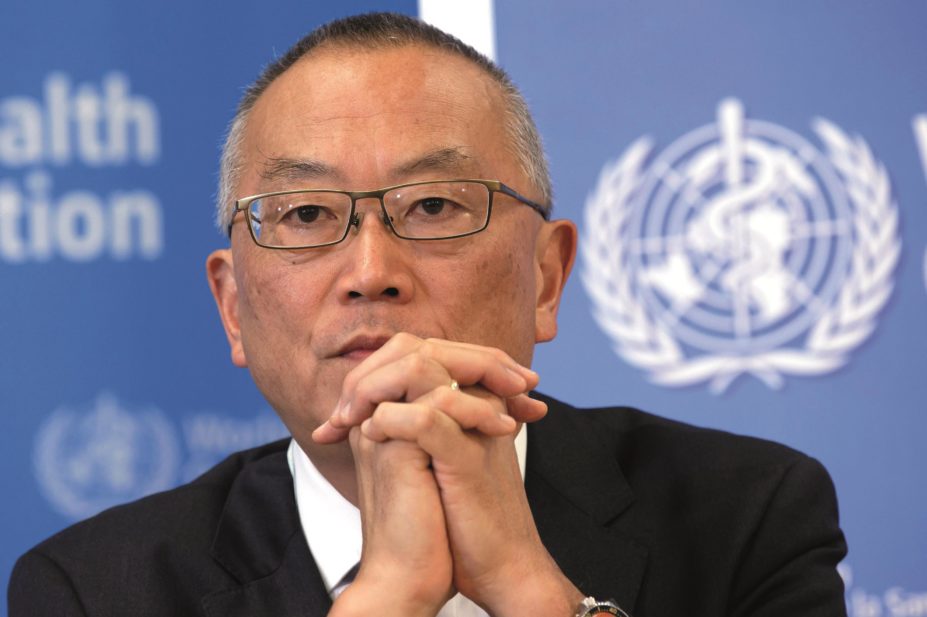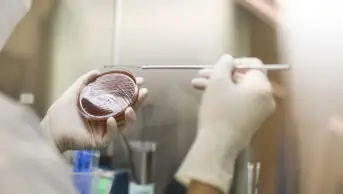
epa european pressphoto agency b.v. / Alamy Stock Photo
Keiji Fukuda, special representative for antimicrobial resistance in the office of the World Health Organization (WHO) director general, has had a long career in infective medicines and global health. From 2010 to 2015, he served as assistant director general for health security. He was special adviser on pandemic influenza to the director general from 2009 to 2010. Before that, he was the interim assistant director general for health security and environment. Fukuda has helped shaped the global approach to pandemic preparedness and helped manage the response to the influenza H1N1 pandemic.
How serious a threat does the growing problem of antibiotic resistance pose and could it reverse the progress we have made?
The development of antibiotics has been one of the fundamental and major steps forward in medicine and science in the past century. We rely on them to treat infections directly. Indirectly, we rely on antibiotics to provide a safety net for people who are admitted to hospital, for people undergoing surgery, people who have undergone trauma, people who have chronic diseases such as cancer or diabetes, and those who are susceptible to infections. The development of antimicrobial resistance threatens the gains we have made in treating all those people.
How is this impacting public health worldwide?
We know there are some significant gaps in information in many countries. But we do have some information. For example, in the United States, in 2013, the Centers for Disease Control and Prevention estimated that at least 2 million people per year develop antimicrobial resistance infections and, of those people, at least 23,000 of them die each year. This translates into direct and indirect costs of more than US$50bn and that’s just one country. It begins to give you a sense of magnitude of what we are starting to see. It is clear that, if we do not bring antimicrobial resistance under control and begin to reverse it, we are going to see increasing numbers of deaths assisted by these resistant organisms, and the costs are going to be high. We also see direct effects on health systems. In some countries, [such as Ghana], we see hospitals that have had to close down because they cannot get rid of resistance in the hospitals and this poses a big threat to anyone who is admitted.
Are these the so-called ‘superbugs’?
Yes, these are infections that are resistant to most of the drugs we have to treat them and, in some instances, we have organisms that are resistant to all drugs that we have to treat them.
The WHO public awareness survey of antibiotic resistance found there are some common misconceptions. Around 64% of respondents believed antibiotics could be used to treat common colds, despite the fact that they have no impact on viruses. Does this worry you?
The good part of the survey, which polled 10,000 people in 12 countries, was that the majority of the respondents indicated that they had at least heard of antimicrobial resistance. So at least there is an awareness that there is an issue out there. But it was clear also that there are a lot of misconceptions and the one you mentioned is an important one. In fact, many respiratory illnesses are caused by viruses, such as the common cold. These illnesses should not be treated with antibiotics. So, people who believe they can be treated with antibiotics are more likely to get their doctors to prescribe them, or if they are in a country where you do not need to get a prescription from a doctor, they are likely to go and buy the antibiotic treatment themselves. These behaviours contribute to the development of resistance.
The over-prescription of antibiotics by doctors and the misuse and overuse of antibiotics by farmers in livestock have also been identified as areas of concern. What is your advice?
There are many things that need to be done. One of them is raising awareness and understanding among health practitioners, the agricultural community and the general public. A lot of people have been misinformed, so we have to address that.
How can pharmacists help?
Pharmacists have a critical role in educating patients and the public about antibiotics, particularly about the need to take them correctly
Pharmacists frequently come into contact with patients. They are often the ones who have to explain to the patient how to use the medicine and what it is good for. Pharmacists have a critical role in educating patients and the public about antibiotics, particularly about the need to take them correctly. They can also provide advice to the medical community — doctors and nurses — about antibiotics.
How does the purchase of antibiotics over the internet without a prescription and from street hawkers in some developing countries exacerbate the problem?
One of the central concepts important for everyone to rally around is the idea that when antibiotics are needed then they are essential and people ought to have access to them. But when they are misused they are going to help drive resistance. Taking antibiotics without proper medical advice is going to mean that a lot of people are going to be using them incorrectly. For example, people taking them at the wrong time, in the wrong way and for the wrong illness. This is another important factor in driving resistance.
The WHO survey showed nearly a third of respondents stop taking antibiotics when they feel better. How critical is it for people to finish a course of antibiotics?
Those who fail to finish their course of antibiotics may still harbour the bacteria that the antibiotic is trying eliminate. Those surviving bacteria have a higher likelihood of become resistant to the antibiotics used to kill them, so of course this kind of behaviour can increase resistance. It is vital that patients are educated about how to take their course of antibiotics.
Given the growing antibiotic resistance, are there sufficient new drugs in the pipeline to help combat this?
No. We have known for some time that the development of new antibiotics has become increasingly unattractive for many pharmaceutical companies. The result is that we now have too few new antibiotics in development. We need to get back to a situation where there is sustained development of new medicines and ensure that the use and distribution of these new medicines are done in a way that minimises the chances of resistance.
The WHO has launched a new global awareness campaign called ‘Antibiotics: handle with care’. What are the main objectives?
The objective of this campaign is to bring to everyone’s attention that we have a significant public health problem and by taking certain approaches we can overcome this. The problem has to be tackled from all angles: health, research and development, agricultural, etc. So we need policymakers, farmers, health workers, the general public and those in the pharmaceutical industry to all be on board.


